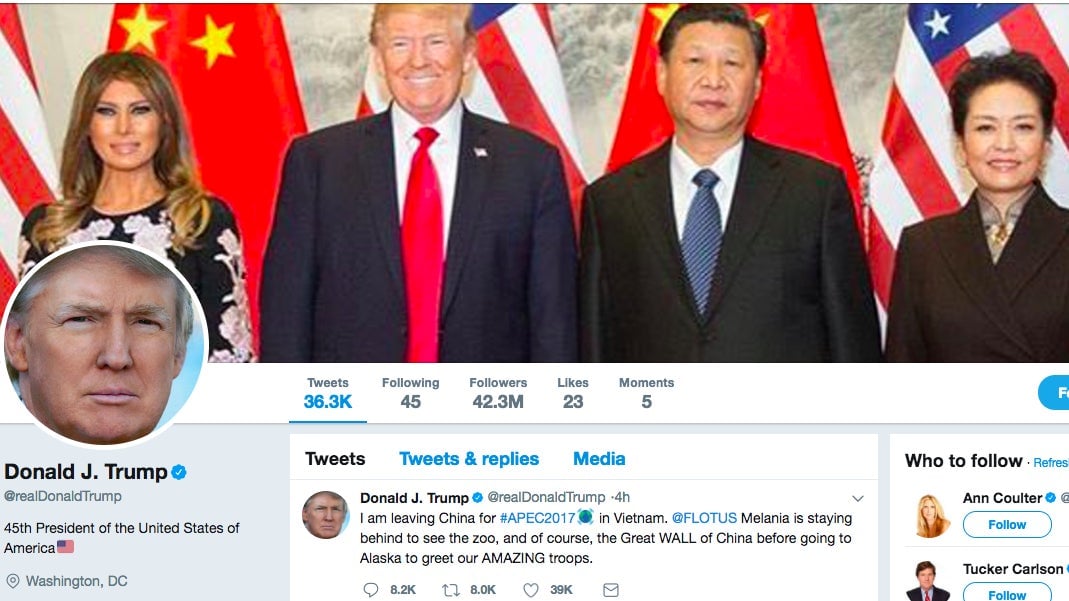Yes, Trump’s Twitter style did change while he was in China
Donald Trump wrapped up his state visit to China today and boarded Air Force One for the APEC summit in Vietnam, the fourth leg of his lengthy Asia tour. During his two-night stay in Beijing, the US president was feted with everything from an unprecedented Forbidden City dinner to a military honor guard alongside flag-waving Chinese kids—experiences that are captured in his cheerful tweets.


Donald Trump wrapped up his state visit to China today and boarded Air Force One for the APEC summit in Vietnam, the fourth leg of his lengthy Asia tour. During his two-night stay in Beijing, the US president was feted with everything from an unprecedented Forbidden City dinner to a military honor guard alongside flag-waving Chinese kids—experiences that are captured in his cheerful tweets.
While the country’s Great Firewall didn’t keep him from using his favorite means of communication, Trump’s Twitter style briefly changed while he was in China. For one thing, he changed his header photo twice during the stay—first to a photo of him, his wife Melania, China’s president Xi Jinping, and Xi’s wife Peng Liyuan surrounded by the crew of a Peking opera performance they watched, and then to a more formal photo of the two first couples standing in front of the US and Chinese flags.
Since August, Trump had mostly been using a patriotic image of the US stars and stripes atop his Twitter page. For the Asia tour, which started in Japan on Nov. 5, he changed the image frequently. In Japan and South Korea, he showed photos of himself at US military bases in each of those countries.
While in China, Trump not only used two header photos with Xi, but also tweeted less and kept things positive. At home, he’s known to tweet over a dozen times a day. During his 48 hours in Japan, he tweeted 13 times (including two tweets on the Saudi Arabia’s royal purge). In his 24 hours in South Korea, he tweeted 17 times (including eight tweets on domestic affairs such as the Virginia governor race). In about 42 hours in China, Trump tweeted only eight times, and the first tweet came only seven hours after he touched down in Beijing.
What was Trump tweeting about while in China? Among his eight posts, three are thank-you notes for Xi’s hospitality, three show his confidence in a stronger US-China relationship, one sends a warning to North Korea, and the last is about the one-year anniversary of his election victory. In other words, Trump’s tweets in China were mostly positive messages to Xi or China.
Beijing wanted to keep Trump full, flattered, and fatigued during his visit while avoiding trouble on contentious issues including trade, North Korea, and the South China Sea. Judging from Trump’s tweets, it accomplished those goals.